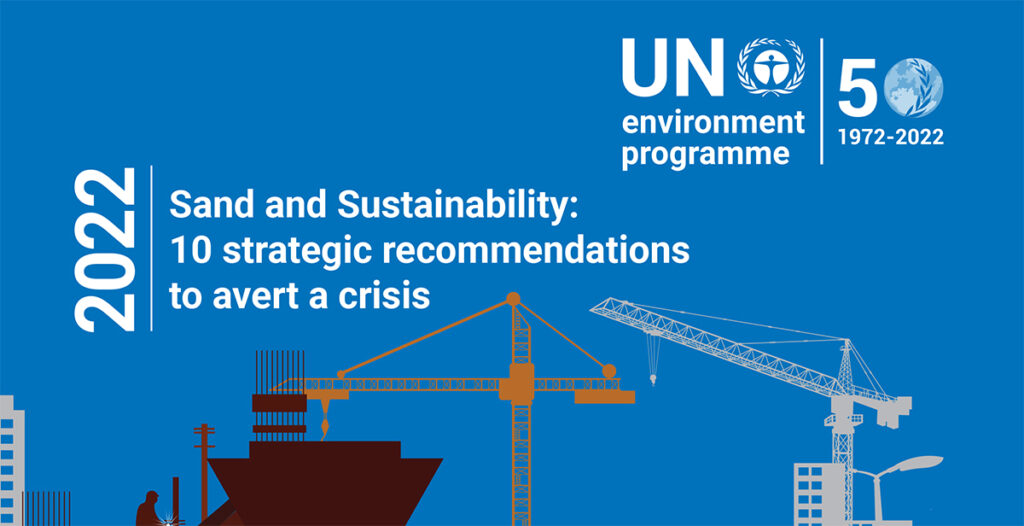“All countries should be aware that their development is at stake if they do not take better care of sand, a common but precious resource found on many of the world’s beaches and in our seas,” is a conclusive statement from the United Nations Environment Programme (UNEP) in a new report launched late last month.
UNEP’s report, “Sand and Sustainability: 10 Strategic Recommendations to Avert a Crisis,” makes it clear that the world cannot continue to extract 50 billion tons of sand from the ground and sea each year without serious consequences.
After water, sand is the most used resource worldwide, with an extraction of 50 billion tons of sand and gravel per year that is enough to build a wall 27 meters wide and 27 meters high around planet Earth.
Given our dependence on it, sand needs to be recognized as a strategic resource and its extraction and use needs to be rethought, according to the new report.
“Our sand resources are not infinite, and we need to use them wisely,” said Pascal Peduzzi, director of GRID-Geneva at UNEP and program coordinator of the report.
“To achieve sustainable development, we have to drastically change the way we produce, build and consume products, infrastructure and services. If we get a grip on how to manage the world’s most extracted solid material, we can avoid a crisis and move towards a circular economy,” Peduzzi added.

Criteria-driven Extraction
The sand extraction from rivers and coastal or marine ecosystems can lead to erosion; salinization of aquifers; loss of storm surge protection and impact on biodiversity, threatening livelihoods such as water supply, food production and fisheries, as well as the tourism industry.
According to the authors of the report, sand must be recognized as more than just a building material, but as a strategic resource with multiple functions in the environment, and they insist that governments, industries and consumers should set a price that recognizes the true social and environmental value of sand.
It also recommends banning sand mining from beaches, as it is crucial to coastal resilience, the environment and the economy.
The report also notes that keeping sand on coasts may be the most cost-effective strategy for climate adaptation because it protects against storm surges and sea level rise.
In addition, it proposes that an international standard be developed on how sand is extracted from the marine environment, stressing that it could bring drastic improvements, as most marine dredging is done through public tenders, open to international companies.

New Actions
As an essential element in the production of concrete for vital infrastructure, sand is fundamental to economic development. It also provides habitats for flora and fauna, while supporting biodiversity, including marine plants that act as carbon sinks or filter water.
Banning the dumping of mineral waste and encouraging the reuse of sand in public contracts are some of the policy measures cited that will help move towards a circular and virtuous sand economy.
The report also details that crushed rock, recycled construction, demolition material and mineral sand from mining waste are viable alternatives that should be incentivized.
Finally, the report recommends that sand resources be mapped, monitored and reported, and that all those involved in decisions related to their management allow for place-based approaches and avoid one-size-fits-all solutions, the document stresses.
To read the report “Sand and Sustainability: 10 Strategic Recommendations to Avert a Crisis“, click here




